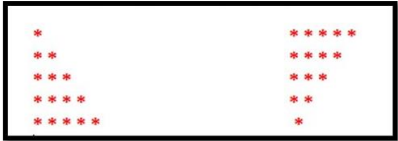Download CBSE Class 9 AI Syllabus PDF: Chapter Breakdown, Marking Scheme & Exam Pattern
FAQs on CBSE Class 9 Artificial Intelligence Syllabus 2025-26 - Updated Curriculum
1. How many sections are there in the Class 9 CBSE AI syllabus?
There are four sections of the AI syllabus for CBSE Class 9. It has been carefully designed to introduce students to the basic concepts of AI at this level of education.
2. Do I have to study a programming language to understand AI?
As per the latest Class 9 AI syllabus, you will have to study Python, a programming language, to understand AI's basic modelling and coding concepts.
3. What is the best way to prepare for Class 9 AI exams?
Focus on the CBSE Class 9 AI syllabus and check the chapters' marking scheme. Find out how the questions are set in the textbook exercises and seek assistance from subject experts. Study the chapters in the syllabus well and practice to ace the exams.
4. What is the syllabus of AI for class 9?
CBSE AI Syllabus For Class 9 includes 4 sections:
Part A: Employability Skills
Part B: Subject Specific Skills
Part C: Practical Work
Part D: Project Work / Field Visit / Student Portfolio
5. Is AI compulsory in class 9 CBSE?
No, AI is not a compulsory subject in Class 9 CBSE. It is offered as an optional skill subject. Schools can choose to include it in their curriculum, and students have the option to select it based on their interests and future aspirations.
6. Which is better for Class 9 AI or IT?
Choosing between AI and IT for Class 9 depends on the student's interests and career goals. AI focuses on machine learning, neural networks, and how AI impacts daily life, providing a strong foundation for future studies in AI and robotics. IT, on the other hand, covers broader topics like computer fundamentals, programming, and networking, offering versatile skills applicable to various fields. If a student is interested in cutting-edge technology and innovation, AI might be more suitable. For those looking for a comprehensive understanding of technology and computer applications, IT is a better choice.
7. Is AI a tough subject?
AI can be challenging due to its complex concepts like machine learning, neural networks, and data analysis. However, with the right resources, consistent effort, and interest, students can grasp these topics effectively. The Class 9 AI syllabus is designed to introduce these concepts in a simplified manner, making it manageable for beginners. Regular practice and a curious mindset can help students overcome difficulties and excel in AI.
8. Is Class 9 AI mostly maths?
AI involves a significant amount of maths, especially in areas like machine learning, neural networks, and data analysis. Key mathematical concepts used in AI include algebra, calculus, probability, and statistics. However, AI also incorporates programming, logic, and problem-solving skills. While a strong foundation in maths is beneficial, AI is a multidisciplinary field that combines maths with computer science and real-world applications, making it accessible to those willing to learn and practice.
9. What is the structure of the AI syllabus for Class 9?
The syllabus includes both theoretical (50 marks) and practical (50 marks) components, totaling 100 marks.
10. How can students benefit from studying AI in Class 9?
Students gain a foundational understanding of AI, critical thinking skills, and hands-on experience with AI projects, preparing them for advanced studies and future careers.






































